As Messianics on a quest for self-definition and the recharacterization of our faith, perhaps the most fundamental, core issue we face is that we too quickly and easily revert to religion, mistaking it for a tangible relationship with God. As such, when we demonstrate the fortitude to reject a given religion (i.e. Christianity, Judaism, etc.) in pursuit of a “true faith,” we find ourselves believing that whatever road we feel led to travel next (i.e. “Messianic Judaism,” Hebraic roots, et al) must therefore be the way to get to Him. This might be true, except for the fact that many of us have issues with shedding our religious tendencies, and more often than not, end up simply exchanging one brand of religion for another. Read more
Q: Dear Kevin, my identity is in Yeshua, and this identity connects me to Israel. I am not Jewish by birth, but I am an heir to the seed of Avraham. So, as a Messianic Believer, should I convert?? Personally, I feel I should, but am seeking guidance on the matter. Shalom Read more
“So Paul stood in the midst of the Areopagus and said, ‘Men of Athens, I observe that you are very religious in all respects. For while I was passing through and examining the objects of your worship, I also found an altar with this inscription, “TO AN UNKNOWN GOD.” Therefore what you worship in ignorance, this I proclaim to you.’” Acts 17:22-23 (NAS)
Most religions have their fair share of religious objects, icons and artifacts—and Judaism is no exception. Though some may consider the tabernacle elements such as the ark, the menorah, and the altar to be sacred symbols to all Israel, the ceremonial use of these articles was restricted to the priesthood, which more than likely limited their emblematic stature among the populace. Rather, it is the religious objects of later Judaism—both Scripture-based and contrived—that have become standardized icons to the Jewish people: the star of David, kippah, tallit, chanukiyah (the Chanukah “menorah”), torah scrolls, phylacteries and fringes. Read more

